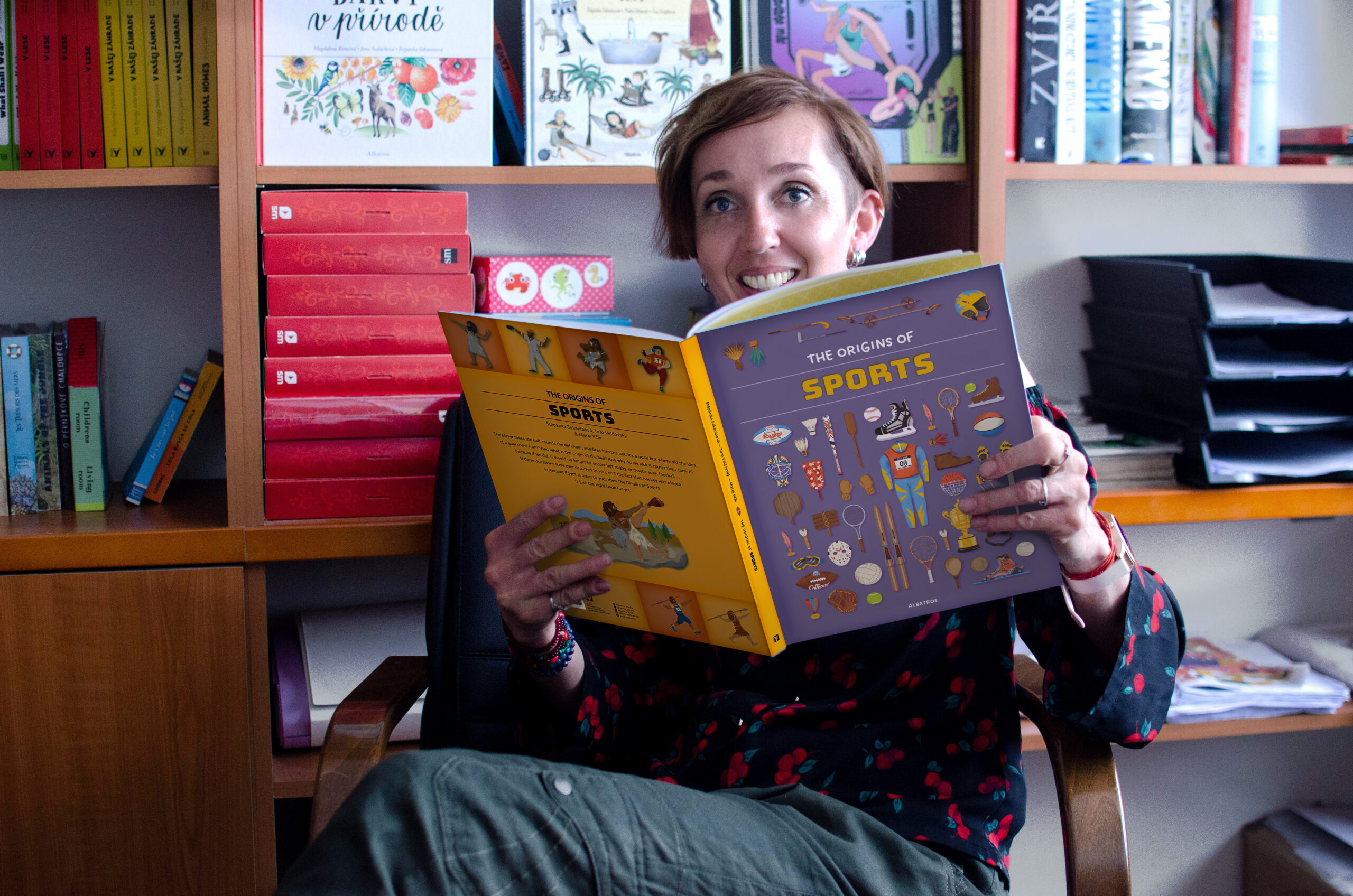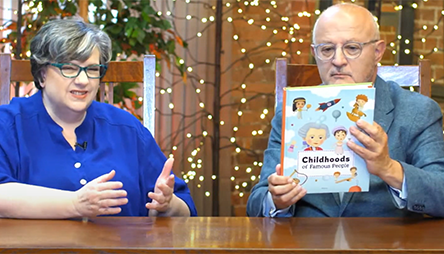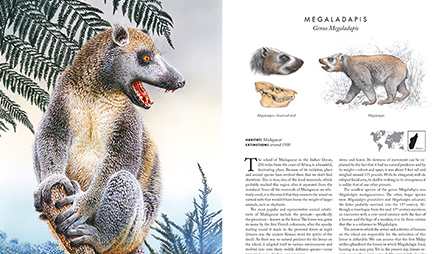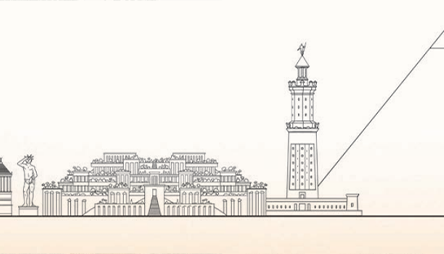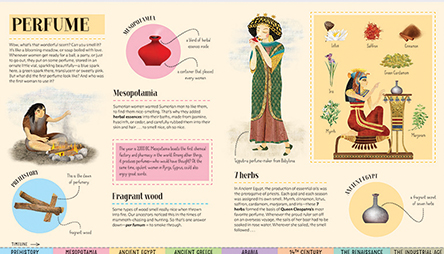Interview with Stepanka Sekaninova
Meet Stepanka Sekaninova, the author and also the editor of our books, whose love for books and storytelling began when she was a child. While still pursuing her graduate degree, Stepanka started working as a journalist for Czech Television (the biggest public broadcaster in the Czech Republic). Stepanka’s lifelong desire to write and express herself through words never wavered. Fate intervened and gave her an extraordinary opportunity, which she seized with great enthusiasm. Stepanka wholeheartedly accepted the offer to work for our company, Albatros, as an author and an editor a few years ago. She now finds herself fulfilling a dream she has nurtured since childhood, surrounded by the mesmerizing allure of beautiful children’s books. Learn more about Stepanka Sekaninova in the interview below, all about her job and her personal experience. What led you to write children’s books? Honestly, a complete coincidence. The day I got my job as a literary editor at Albatros. Before that, I had written in my free time and only occasionally, but never children’s books – mostly poetry and short stories, or TV scripts for semidocumentaries. Can you share some insights into your creative process? How do you develop ideas for your stories? What are your favorite topics? If I’m writing a book based on a story and I’m weaving nonfiction themes into it. For example, the dragon has rotten teeth and he whines because he can’t swallow any princesses with them… I think, great, I’ll use this dragon to teach the children about hygiene. So I sit down and I start to write a fictional story, and it slowly starts to unfold under my hands. Then, as sensitively as I can, I add nonfictional passages to the story I’ve created – which I research, of course. If I’m writing only a non-fiction book, I think of a subject I’d like to write about…so I research it to see if it’s promising. Then I make an outline based on my research and start writing – hand in hand with intense absorption and study of the topic. And what are my favorite topics? I have a degree in history, so the historical ones, I enjoy bringing the past to light. What is your favorite part of the writing process, and why? The part where I get to make up a story, where I get to play, where I get carried away by the story because, from the first sentence, it takes on a life of its own. It’s incredibly fascinating. And that’s why I’ve been obsessed with writing and inventing stories since childhood. What challenges do you face in creating children’s books, and how do you overcome them? My books are very visual, but I feel more confident with letters, with texts. So I struggle with the visual aspect. Fortunately, we have very skilled graphic designers and skilled illustrators, and I listen to their words and learn from them. In your opinion, what is the role of storytelling in strengthening the bond between parents and their children? There’s nothing like walking with your child and turning the world around you into stories, or cuddling up together at night and reading together. In both cases, you can continue to talk about the stories together, developing them and subtly guiding your child. Whether it happens on a walk, on a train, in a car, or before bed. Each time it is a very intimate and intense process that by its very nature strengthens the relationships between parents and their children. Can you give us a sneak peek into any upcoming projects or books you’re working on? At the moment, I am working on a little book about loneliness. I want to show that, paradoxically, loneliness can be extremely adventurous and that children don’t have to be afraid of it. They don’t need to be surrounded by people all the time. This book has a minimum of text and a maximum of pictures. It is the first book where I had the visual idea in mind from the start because it was the pictures that gave me this idea. Next, I’m writing a book about how ordinary journeys to school can be different. While my children grumble when they have to get up five minutes before school starts, some children have to walk two hours in the desert to get to their school, and others have to wade through wild rivers, risking their lives, or face freezing temperatures. Then I started to write a book about superstitions. For instance, why people are afraid of black cats? 13 as the unlucky number? or why people wear four-leaf clovers for luck? and so on. If you could have a superpower to help you write children’s books, what would it be and why? The ability to reclaim a child’s way of thinking and seeing the world. Why? Because then the books I write would be perfect for children. If you could magically bring any fictional character to life to babysit your kids, who would it be and why? It would definitely be Pippi Longstocking (by Astrid Lindgren). The children would have so much fun with her that I am sure they would forget all about their mobile phones. Or Betty McDonald’s Mrs. Piggle-Wiggle, who would painlessly and humorously rid them of all their vices, such as messiness, laziness, etc. And since I can’t decide between the two, I’d have to flip a coin. What’s the most unusual or unexpected location or moment where you’ve found inspiration for a children’s book idea? One morning while brushing my teeth. I thought of the story of a young, inexperienced witch. She cast a bad spell and changed the colors in a fairyland. Little Red Riding Hood became Little „Blue“ Riding Hood, etc… The witch has to undo the mix-up and get the fairyland back to its proper colors. So it’s a book about mixed colors. Young children, for whom the book is intended, help her to do this, and in this way, they…
Interview with Stepanka Sekaninova
Meet Stepanka Sekaninova, the author and also the editor of our books, whose love for books and storytelling began when she was a child. While still pursuing her graduate degree, Stepanka started working as a journalist for Czech Television (the biggest public broadcaster in the Czech Republic). Stepanka’s lifelong desire to write and express herself through words never wavered. Fate intervened and gave her an extraordinary opportunity, which she seized with great enthusiasm. Stepanka wholeheartedly accepted the offer to work for our company, Albatros, as an author and an editor a few years ago. She now finds herself fulfilling a dream she has nurtured since childhood, surrounded by the mesmerizing allure of beautiful children’s books. Learn more about Stepanka Sekaninova in the interview below, all about her job and her personal experience. What led you to write children’s books? Honestly, a complete coincidence. The day I got my job as a literary editor at Albatros. Before that, I had written in my free time and only occasionally, but never children’s books – mostly poetry and short stories, or TV scripts for semidocumentaries. Can you share some insights into your creative process? How do you develop ideas for your stories? What are your favorite topics? If I’m writing a book based on a story and I’m weaving nonfiction themes into it. For example, the dragon has rotten teeth and he whines because he can’t swallow any princesses with them… I think, great, I’ll use this dragon to teach the children about hygiene. So I sit down and I start to write a fictional story, and it slowly starts to unfold under my hands. Then, as sensitively as I can, I add nonfictional passages to the story I’ve created – which I research, of course. If I’m writing only a non-fiction book, I think of a subject I’d like to write about…so I research it to see if it’s promising. Then I make an outline based on my research and start writing – hand in hand with intense absorption and study of the topic. And what are my favorite topics? I have a degree in history, so the historical ones, I enjoy bringing the past to light. What is your favorite part of the writing process, and why? The part where I get to make up a story, where I get to play, where I get carried away by the story because, from the first sentence, it takes on a life of its own. It’s incredibly fascinating. And that’s why I’ve been obsessed with writing and inventing stories since childhood. What challenges do you face in creating children’s books, and how do you overcome them? My books are very visual, but I feel more confident with letters, with texts. So I struggle with the visual aspect. Fortunately, we have very skilled graphic designers and skilled illustrators, and I listen to their words and learn from them. In your opinion, what is the role of storytelling in strengthening the bond between parents and their children? There’s nothing like walking with your child and turning the world around you into stories, or cuddling up together at night and reading together. In both cases, you can continue to talk about the stories together, developing them and subtly guiding your child. Whether it happens on a walk, on a train, in a car, or before bed. Each time it is a very intimate and intense process that by its very nature strengthens the relationships between parents and their children. Can you give us a sneak peek into any upcoming projects or books you’re working on? At the moment, I am working on a little book about loneliness. I want to show that, paradoxically, loneliness can be extremely adventurous and that children don’t have to be afraid of it. They don’t need to be surrounded by people all the time. This book has a minimum of text and a maximum of pictures. It is the first book where I had the visual idea in mind from the start because it was the pictures that gave me this idea. Next, I’m writing a book about how ordinary journeys to school can be different. While my children grumble when they have to get up five minutes before school starts, some children have to walk two hours in the desert to get to their school, and others have to wade through wild rivers, risking their lives, or face freezing temperatures. Then I started to write a book about superstitions. For instance, why people are afraid of black cats? 13 as the unlucky number? or why people wear four-leaf clovers for luck? and so on. If you could have a superpower to help you write children’s books, what would it be and why? The ability to reclaim a child’s way of thinking and seeing the world. Why? Because then the books I write would be perfect for children. If you could magically bring any fictional character to life to babysit your kids, who would it be and why? It would definitely be Pippi Longstocking (by Astrid Lindgren). The children would have so much fun with her that I am sure they would forget all about their mobile phones. Or Betty McDonald’s Mrs. Piggle-Wiggle, who would painlessly and humorously rid them of all their vices, such as messiness, laziness, etc. And since I can’t decide between the two, I’d have to flip a coin. What’s the most unusual or unexpected location or moment where you’ve found inspiration for a children’s book idea? One morning while brushing my teeth. I thought of the story of a young, inexperienced witch. She cast a bad spell and changed the colors in a fairyland. Little Red Riding Hood became Little „Blue“ Riding Hood, etc… The witch has to undo the mix-up and get the fairyland back to its proper colors. So it’s a book about mixed colors. Young children, for whom the book is intended, help her to do this, and in this way, they…


